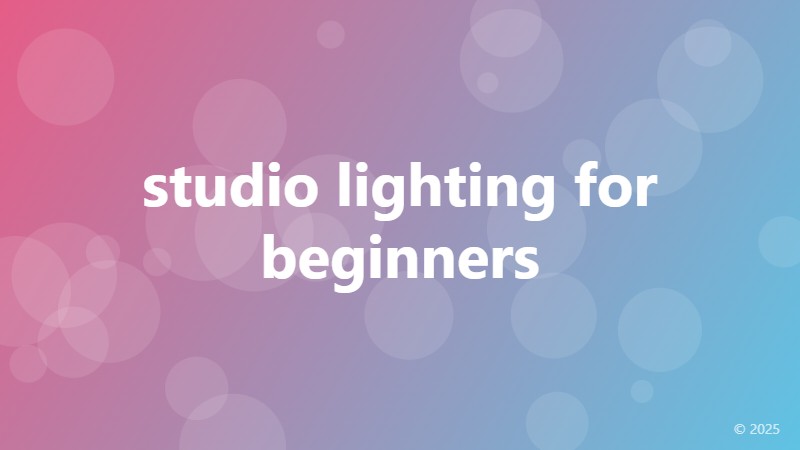studio lighting for beginners

Understanding Studio Lighting for Beginners: A Comprehensive Guide
As a beginner in photography, understanding studio lighting can seem like a daunting task. With so many options available, it's hard to know where to start. However, with the right knowledge and equipment, you can take your photography skills to the next level. In this article, we'll cover the basics of studio lighting for beginners, including the different types of lighting, equipment, and techniques to get you started.
The Importance of Studio Lighting
Studio lighting is essential for capturing high-quality images in a controlled environment. It allows you to manipulate the light to achieve the desired effect, mood, and atmosphere in your photos. With studio lighting, you can:
- Control the direction and intensity of the light
- Reduce harsh shadows and unwanted reflections
- Highlight specific areas of the subject
- Create a sense of depth and dimension
Types of Studio Lighting
There are several types of studio lighting, each with its own unique characteristics and uses. The most common types include:
Natural Light
Natural light is the most readily available and cost-effective option. However, it can be unpredictable and limited by the time of day and weather conditions.
Continuous Lighting
Continuous lighting uses LED or fluorescent lights to provide a constant source of light. It's ideal for video production, product photography, and still-life photography.
Strobe Lighting
Strobe lighting uses a brief, intense flash of light to freeze fast-moving subjects and capture high-speed images. It's commonly used in fashion, portrait, and sports photography.
Essential Studio Lighting Equipment
To get started with studio lighting, you'll need the following essential equipment:
- Light sources (strobes, continuous lights, or natural light)
- Light modifiers (softboxes, umbrellas, reflectors)
- Light stands and booms
- Remote triggers or sync cords
- Diffusers and gels
Basic Studio Lighting Techniques
Once you have the necessary equipment, it's time to learn some basic studio lighting techniques. Here are a few to get you started:
Three-Point Lighting
Three-point lighting involves using three light sources: a key light, fill light, and backlight. This technique is ideal for portraits and product photography.
Sidelighting
Sidelighting involves placing the light source at a 90-degree angle to the subject. This technique is great for creating depth and dimension in your images.
Backlighting
Backlighting involves placing the light source behind the subject. This technique is commonly used to create a sense of drama and mood in your images.
Conclusion
Studio lighting is a vast and complex topic, but with the right knowledge and equipment, you can take your photography skills to the next level. Remember to practice and experiment with different techniques and equipment to find what works best for you. Happy shooting!